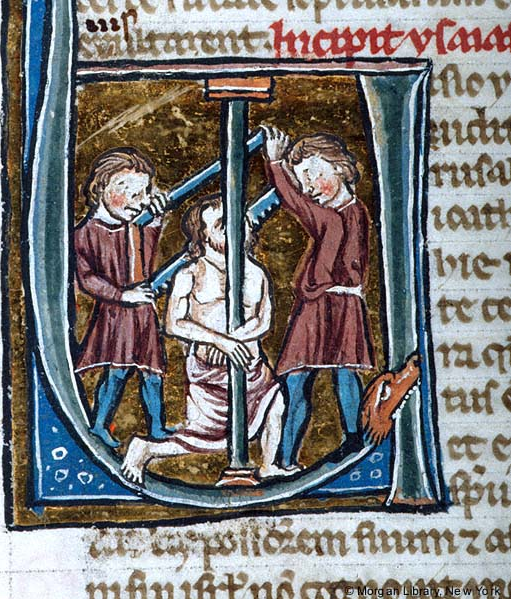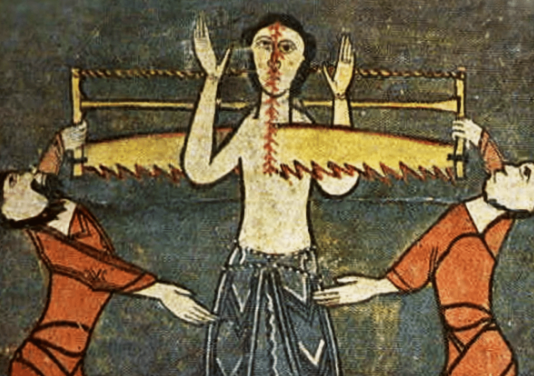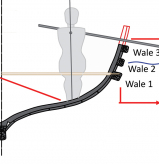-
Posts
7,985 -
Joined
-
Last visited
Content Type
Profiles
Forums
Gallery
Events
Everything posted by Louie da fly
-
You're doing a beautiful job with this, mate. Steven
- 179 replies
-
- Second Build
- Pinta
-
(and 2 more)
Tagged with:
-
Looking very good, mate. I wouldn't want to take on all that rope work. Steven
- 28 replies
-
- Nave Egizia
- Amati
-
(and 1 more)
Tagged with:
-
Oh dear, oh dear, oh dear. Dreadful ghastly stuff. Remember visiting the UK and being offered a beer in a pub; as a proud Australian I said "Anything but Fosters . . ." Steven
-
Nup - it's all about how Bundy is as much an Aussie icon as the other two: http://www.postkiwi.com/2006/bundaberg-rum-bundy-bear/
-
Nice. I can see that the idea of having a separate mortice for each tenon is a little (i.e. VERY) impractical and that at this scale a single long slot does the job just as well. As usual you try out things that nobody else would dream of taking on. Even the pegs fixing the tenons in place! Steven
- 142 replies
-
As Baker has pointed out in his Pelican build, when the ship left England she was still called the Pelican - she was renamed during the voyage. So in that respect, your model is more correct. On the other hand, I have a feeling that only ships that actually belonged to the monarch would have the right to display the royal coat of arms. My understanding is that though on a royally approved (and subsidised?) voyage, the ship was privately owned. But that's just me being extremely picky. You can actually send a private message to people you want to alert to your build. On the banner at the very top of the page there is a symbol of two intermingled "speech balloons" which allows you to do so. I'd recommend you also contact Baker, whose scratch Pelican build is very thoroughly researched. He's even put a pelican on it. You're quite correct, though; nobody knows exactly what the Golden Hinde looked like. It's all conjecture, or perhaps you could say educated guesswork. There's been quite a lot discovered since this kit was produced, but generally it's a pretty good representation of a "typical" Elizabethan galleon. I look forward to seeing your further progress. I think I'll pull up a chair, break out the popcorn and watch. Steven
- 137 replies
-
- Golden Hinde
- Revell
-
(and 2 more)
Tagged with:
-
I've had a lot to do with oil lamps, made one or two out of pottery, seen any number of them in Byzantine museums. A bit of an unfair advantage . Steven
- 142 replies
-
Very interesting model. That strange swelling at the bow is something I've never come across before. I think the thing is a ship-shaped oil lamp, and that is the oil reservoir. The inscription reads something like "holy/sacred/priest/temple of Athens" possibly "sacred to Athens"? Steven
- 142 replies
-
That's starting to look very interesting, Dick. The cross-section looks considerably more stable in my (admittedly ill-informed) opinion. Have you read "Age of the Galley"? It's a collection of papers on galleys of various eras, including this one IIRC. The issue of protective screens appears in it. I think they suggested it was some kind of wooden lattice, but it's quite a while ago and the rotten local library went and sold the book without offering to sell it to me! Also Prof John Pryor's Age of the Dromon is worth checking out - it contains considerable calculations regarding oar length and angle, and offsets for oarsmen in different banks. He came to the conclusion that the oars of the upper bank should be longer than those for the lower bank. OTOH the builders of the Olympias trireme (IIRC) had them the same length because of issues about pendulums of different lengths having different periods of "swing", so they wouldn't be able to keep in time with each other. Of course that meant the upper bank oarsmen, the thranites, had their oars at a much steeper angle than the bottom bank, the thalamians. Just a few things that might bear thinking about at this early design stage. Steven
- 142 replies
-
With the level of research and care Dick puts into everything he does, I'm looking forward to seeing the result. Steven
- 142 replies
-
Yes, the galleys recovered from the Yenikapi excavations are incredibly lightly built - though they were about 30 metres (90 feet) long, their keels are made of timbers only 150mmx150mm (6”x6”), the frames 50-60mm (2-2.5") square and 160-200mm (6"-8") apart, and the planks are only 20-30mm (3/4”-1.2”) thick. However, they are reinforced longitudinally with stringers and wales. And yes, storms sank many fleets, not only in ancient but also mediaeval times, as recorded in Byzantine documents. Steven
- 142 replies
-
That's for sure. I've tried to get my head around it several times, with little success. Steven
- 142 replies
-
Granted, but rough seas would surely be likely to cause an unstable vessel to turn turtle more easily by putting the CofG and the CofF further out of alignment. Steven
- 142 replies
-
I don't really feel qualified to make any suggestions on this - I know too little about this kind of ship, despite being very interested in ships ancient and mediaeval. From what I've seen in your log so far, you're not only following the instructions well, but your ship looks good. Your work is neat and precise, and the ropework in particular raises it above the run of the mill model.
- 28 replies
-
- Nave Egizia
- Amati
-
(and 1 more)
Tagged with:
-
Hmm, interesting question. I can see what you're getting at, but I think the skipper would try to avoid submerging the lower oarports at all - it's impossible to keep the water out, even with leather "grommets" to seal the oarports. Any tendency to heel, and I think he'd head to shore as fast as he could. My first thought was that manning the upper benches when the ship was heeling would move the centre of gravity upwards, making the ship even more unstable. But if they're not on their benches, where would those upper oarsmen be? There's probably not room for them anywhere else. So I think that point is moot. BTW, I studied (Ancient) Greek for a year, so if i can be of help with translation, please feel free to ask. Steven
- 142 replies
-
Bob, you're right that nothing survived of the Sutton Hoo ship's hull except the impression made in the sand. There are plenty of photos showing the excavation which ake this very obvious, apart from books which describe the state of the ship at the time and the procedure used to excavate it. I'm not qualified to comment on the need or otherwise for caulking on a clinker-built ship, but yes, as far as I know (given the minimal information available) the planks for ships of this time and region were split rather than sawn. The only saws recovered from Viking sites are fairly small, and the shipbuilding panels in the Bayeux Tapestry don't show saws in use, only axes of various types, and drills. There is a wonderful manuscript illumination from France in about 1170 of a bow-saw being used to cut the prophet Isaiah in half, which is the earliest illustration I know of showing one in use. But that's a different region, and over 500 years later (a little gruesome, but it's art, so that makes it ok. You ought to see some of Durer's pictures of mass martyrdoms - talk about graphic). Steven
-
The Sutton Hoo ship replica is now ready for planking, and the builders have put out an appeal for woollen blankets to use for caulking between the strakes. Anybody in the UK who wants to donate blankets, I'm sure they would be gratefully received. https://saxonship.org/?fbclid=IwAR2GOjy1YvC5l2ZmSSgF3cx98Wvs2ZIbasDdh-JLq1Jgz_09ezGK9JZTDMQ Steven
-
The trireme reconstruction Olympias is apparently very tender - she tips over quite easily. This must make it hard to row her in anything except a flat calm. However, using a theoretical reconstruction to prove anything is fraught with risk - the hull shape of Olympias itself is the result of theorising based on fairly scanty evidence and may not necessarily be correct. But it must be a common factor with all galleys no matter what the era - the flatter the angle of the oars, the more efficiently they use the energy of the oarspersons, so the oarports have to be as close to the water as possible - so if they heel they become difficult or impossible to row. Cross-sections of the Byzantine galleys found at Yenikapi in Istanbul are shown at https://journals.openedition.org/archaeonautica/3684 and perhaps these should be taken into account despite the huge time difference between them and the Mycenaean galleys. Interestingly, the bilge shape seems quite similar - maybe a bit more angled - to that of the bases in Woodrat's photo. Steven
- 142 replies
-
Dick, though it's a round ship and your is a galley, the Uluburun wreck (14th century B.C.E.) might help in determining the underwater cross-section, as far as stability goes.
- 142 replies
-
Very interesting, Roger. So, given the shape of the bilge as indicated by the ancient base, what shape would you suggest for the rest of the hull have as it goes upward from the bilges, to be more stable? Steven
- 142 replies
-
That sounds very interesting, Dick. One thing I've been forced to look up in following this is the periods you're dealing with. So now I know Late Helladic (at least according to Wikipedia) is also known as the Mycenaean age and corresponds to 1550-1050 B.C.E. whereas Geometric is 900-700 B.C.E. and Late Minoan appears to be something like 1500-1100 B.C.E. (that one's a little hard to work out, as the terminology has been revised, but seems to tie in with Late Helladic/ Mycenaean). So the difference in time period between the late Helladic and Geometric is several centuries, in which one can expect quite a bit of evolution in ship types, as well as differences between shipbuilding cultures. So am I right in thinking that the hull shape of the ship you're planning to build is based mostly on the illustrations in your post #7, but with supplementary information from the other illustrations from other periods to fill in details they don't provide? Steven
- 142 replies
About us
Modelshipworld - Advancing Ship Modeling through Research
SSL Secured
Your security is important for us so this Website is SSL-Secured
NRG Mailing Address
Nautical Research Guild
237 South Lincoln Street
Westmont IL, 60559-1917
Model Ship World ® and the MSW logo are Registered Trademarks, and belong to the Nautical Research Guild (United States Patent and Trademark Office: No. 6,929,264 & No. 6,929,274, registered Dec. 20, 2022)
Helpful Links
About the NRG
If you enjoy building ship models that are historically accurate as well as beautiful, then The Nautical Research Guild (NRG) is just right for you.
The Guild is a non-profit educational organization whose mission is to “Advance Ship Modeling Through Research”. We provide support to our members in their efforts to raise the quality of their model ships.
The Nautical Research Guild has published our world-renowned quarterly magazine, The Nautical Research Journal, since 1955. The pages of the Journal are full of articles by accomplished ship modelers who show you how they create those exquisite details on their models, and by maritime historians who show you the correct details to build. The Journal is available in both print and digital editions. Go to the NRG web site (www.thenrg.org) to download a complimentary digital copy of the Journal. The NRG also publishes plan sets, books and compilations of back issues of the Journal and the former Ships in Scale and Model Ship Builder magazines.











